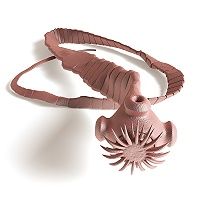Article
Tapeworm Drug Deemed Effective at Curbing MRSA
Author(s):
A drug used to combat tapeworms has been identified by Brown University and Rhode Island Hospital researchers as also beneficial for treating Methicillin-resistant Staphylococcus aureus (MRSA).

A drug used to combat tapeworms has been identified by Brown University and Rhode Island Hospital researchers as also beneficial for treating Methicillin-resistant Staphylococcus aureus (MRSA).
Niclosamide, which is part of the salicylanilide anthelmintics family, is endorsed by the World Health Organization (WHO) and was added to their list of essential medications. According to WHO, niclosamide is especially safe because minute amounts are taken into the gastrointestinal tract, use during pregnancy isn’t harmful, and reports don’t highlight any documented contraindications.
Their study published online in PLOS ONE showed the tapeworm drug also stopped the growth of dozens of methicillin-resistant MRSA cultures during testing and saved nematode worms infected with the superbug.
Additionally, niclosamide and a similar medication that kills parasites in pets called oxyclozanide—in smaller amounts—were as effective as the vancomycin, a treatment solely used for more advanced tapeworm infections, the Brown statement pointed out.
“Since niclosamide is Food and Drug Administration (FDA) approved and all of the salicylanilide anthelmintic drugs are already out of patent, they are attractive candidates for drug repurposing and warrant further clinical investigation for treating staphylococcal infections,” the paper’s lead author, Rajmohan Rajamuthiah, a postdoctoral scholar in the Warren Alpert Medical School of Brown University and Rhode Island Hospital, commented.
While the study wasn’t conducted on humans, the investigators asserted that some issues not present in nematodes would need to be addressed in future research—most involving the drug’s effects. For instance, niclosamide has been shown to leave patients’ bodies quickly and has exhibited difficulty in leaving the bloodstream and deep tissues.
Nevertheless, the authors touted salicylanilide anthelmintic drugs’ effects, which have a low risk of causing antimicrobial resistance because they attack the bacterial cell envelope.
“The low level of systemic circulation coupled with the rapid elimination profile of niclosamide suggests the necessity for further testing of the potential of niclosamide and oxyclozanide for treating systemic infections,” they wrote. “Further studies should include the evaluation of these compounds in systemic and localized infection models in rodents.”


